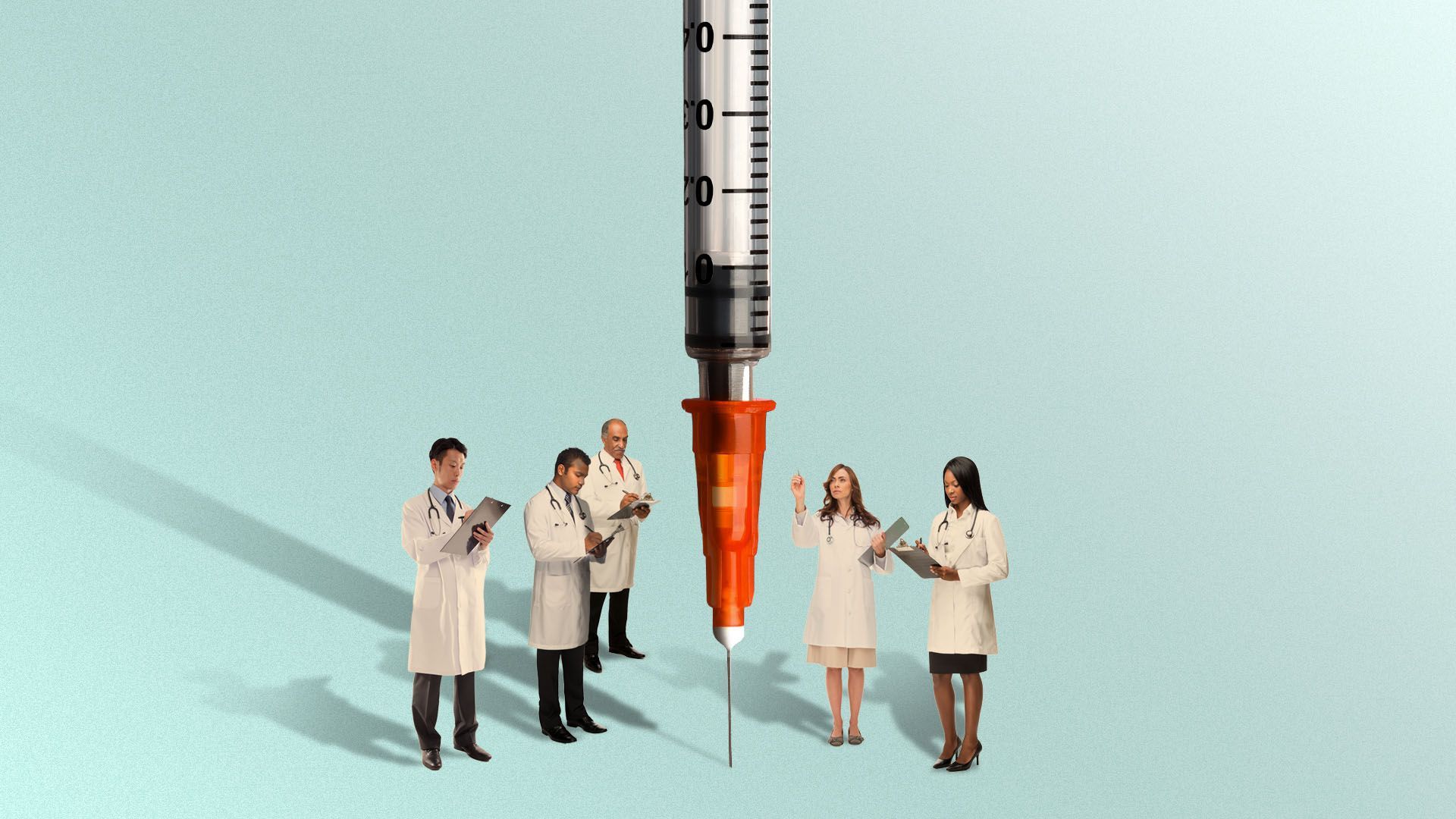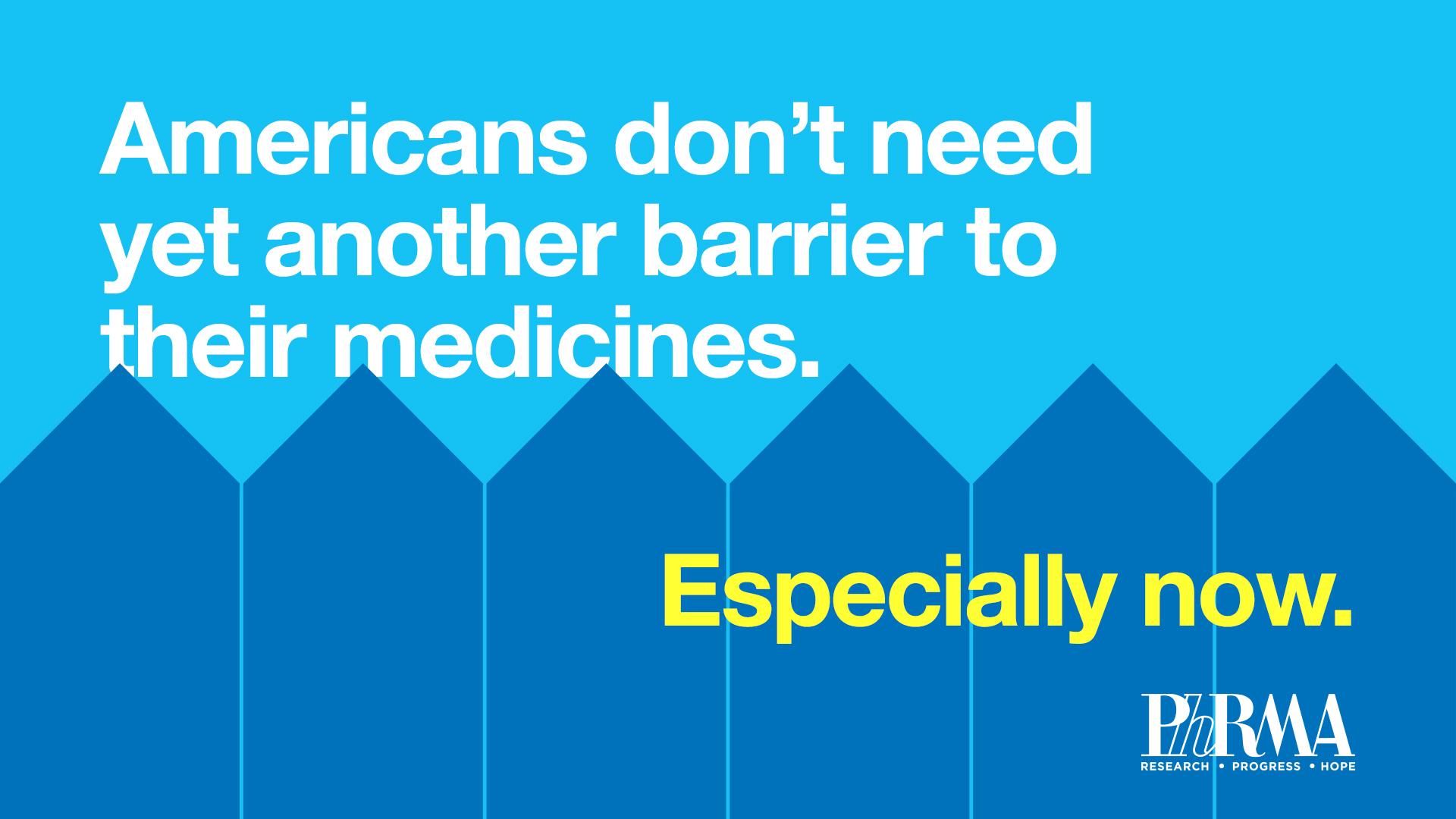1 big thing: Parents a crucial decider in teen vaccine rollout | Tuesday, May 11, 2021
| | | | | | | Presented By PhRMA | | | | Vitals | | By Caitlin Owens ·May 11, 2021 | | Good morning. Some bittersweet news: This is my last week authoring Vitals! - I'll be handing the baton to Tina Reed, who joined the team a few weeks ago. Y'all will be in great hands.
- And I'm not going anywhere. I'm going back to being a full-time health care reporter, and I could not be more excited to have more time to grab coffee (once fully vaccinated, of course), chase down your tips and dive deeper into the most meaningful subjects.
Today's word count is 801, or a 3-minute read. | | | | | | 1 big thing: Parents a crucial decider in teen vaccine rollout |  | | | Illustration: Eniola Odetunde/Axios | | | | About 17 million teens aged 12-15 will be now eligible for the Pfizer COVID vaccine in the coming days — if health officials can get parents on board, Axios' Marisa Fernandez reports. By the numbers: Parents are split nearly 50-50 on whether they will allow their children to get vaccinated as soon as possible, according to Axios/Ipsos data. Why it matters: "We will need parent buy-in," said Donna Hallas, a pediatrician and director of the pediatric nurse practitioner program at the NYU College of Nursing. - "If they're hesitant people or refusers for previous vaccines, this is a really tough job that health care providers need to address."
The state of play: Teen eligibility could help bolster overall vaccination rates, especially as vaccinations slow in some parts of the country, a Kaiser Family Foundation analysis shows. - Adolescents account for 5.3% of the U.S. population.
- Some states, businesses and school districts see the younger population as a way to meet the thresholds for reopening.
Yes, but: Experts hope that as more parents see the children of their friends and family get vaccinated, their hesitancy may shift — just as it did with some adults when the vaccine first became available. |     | | | | | | 2. Americans feel better about return to "normal" |  Data: Axios/Ipsos Poll; Note: 3.2% margin of error; Chart: Axios Visuals For the first time since the start of the pandemic, less than half of Americans (43%) say returning to their "normal" pre-coronavirus lives would pose a large or moderate risk, according to the latest installment of the Axios/Ipsos Coronavirus Index. Driving the news: This tipping point comes as nearly two-thirds of respondents say they've gotten at least one shot, Axios' Margaret Talev reports. - Half of those with children under 18 say they're likely to vaccinate them as soon as they're eligible.
The intrigue: Americans are divided over whether and when they should have to show proof of vaccination. - 55% support showing proof to return to their normal workplace, and 57% endorse it for attending sports events.
- More than six in 10 favor proof for airplane or cruise travel or hotel stays.
- Half or fewer support it for dining out or shopping.
What they're saying: "It's all about the vaccine," said Cliff Young, president of Ipsos U.S. Public Affairs. - "The vaccine is conditioning how Americans are engaging and seeing the world today," Young said. "As more get it, the more normal things will become."
What we're watching: 62% of respondents said they've asked family or close friends about their vaccine status, while 28% said their employers have asked them their status. Only 5% said employers are requiring them to get the vaccine. Go deeper. |     | | | | | | 3. WHO authorizes China's Sinopharm COVID-19 vaccine |  | | | Illustration: Sarah Grillo/Axios | | | | The World Health Organization authorized China's Sinopharm COVID-19 vaccine for emergency use on Friday, making it the sixth vaccine to receive clearance from the global health agency, Axios' Jacob Knutson writes. Why it matters: The vaccine can now be included in the COVAX initiative, which aims to supply low- and middle-income countries but has struggled with massive supply shortfalls. - A WHO advisory group said Sinopharm's shot was 78% effective at preventing symptomatic or serious cases in adults under 60.
Yes, but: Sinopharm has yet to release detailed trial data or an efficacy rate for older populations. Some WHO experts expressed "very low confidence" in Sinopharm's data on the vaccine's safety, per Reuters. Real-world findings are mixed. - Seychelles has the highest vaccination rate in the world, but it's also facing a surge in cases that could hit the tourism-reliant economy hard, Axios' Dave Lawler reports.
- One reason might be that the rollout is based largely on Sinopharm.
- With a less effective vaccine, even higher vaccination rates will be needed, likely coupled with other restrictions, to stop the infection from spreading — though those who are vaccinated should have a much lower risk of getting seriously ill.
|     | | | | | | A message from PhRMA | | Americans don't need another barrier to their medicines | | |  | | | | We have to lower what patients pay for their medicines. We also have to make sure they are getting the medicines they need. The challenge: H.R.3 forces a choice between one or the other. There's a way to do both, but H.R.3 isn't it. Get the facts. | | | | | | 4. Disparities may extend to long COVID | | Researchers and clinicians are concerned that the racial inequities that have characterized the pandemic are now showing up among patients with long COVID, STAT reports. Why it matters: It's still unclear how pervasive the condition is, and how long it lasts. But disparities in who has it and who receives treatment for it would likely only exacerbate the underlying inequities in the U.S. that caused people of color to be hit hardest by the pandemic to begin with. Between the lines: There's no concrete data yet on who is most likely to develop long COVID. - But there's plenty of reason to worry that people of color will have a harder time getting access to care — or being believed in the first place when they describe their symptoms.
- "While [post-acute COVID care] clinics are a critical resource for those suffering from post-COVID conditions, many people do not have access to them due to geographic location or insurance status," John Brooks, chief medical officer on the COVID-19 response at the Centers for Disease Control and Prevention, said at a congressional hearing last month.
|     | | | | | | 5. Catch up quick |  | | | Illustration: Aïda Amer/Axios | | | | The U.S. Treasury began giving state and local governments access to $350 billion in emergency funding from the American Rescue Plan, the department announced Monday. BioNTech said Monday there is currently "no evidence" to support the need to adapt the company's coronavirus vaccine, developed with Pfizer, to be more effective against emerging variants. The latest move to lure would-be employees might be back-to-work cash, Axios' Courtenay Brown reports. Novavax isn't likely to seek emergency authorization for its coronavirus vaccine in the U.S. until June at the earliest, the Washington Post reports. |     | | | | | | A message from PhRMA | | Congress: Here's why H.R.3 isn't the solution to lower cost drugs | | | | Americans don't need another barrier to their medicines. We have to lower what patients pay for their medicines. We also have to make sure they are getting the medicines they need. H.R.3 forces a choice between one or the other. There's a way to do both, but H.R.3 isn't it. Get the facts. | | | | | | Axios thanks our partners for supporting our newsletters.
Sponsorship has no influence on editorial content. Axios, 3100 Clarendon Blvd, Suite 1300, Arlington VA 22201 | | | You received this email because you signed up for newsletters from Axios.
Change your preferences or unsubscribe here. | | | Was this email forwarded to you?
Sign up now to get Axios in your inbox. | | | | Follow Axios on social media:    | | | | | |







No comments:
Post a Comment